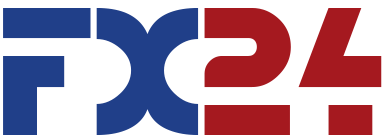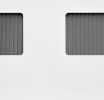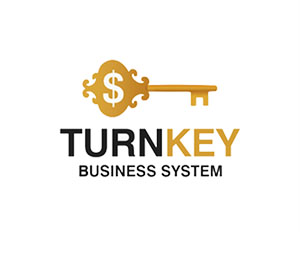Forward vs. Futures Contracts: What’s the Difference?

Forward vs. Futures Contracts: What’s the Difference?
In the world of finance, derivatives play a crucial role in managing risk, speculating on price movements, and optimizing investment strategies.
Among the most widely used derivatives are forward and futures contracts , which allow market participants to hedge against uncertainties or capitalize on market trends.
While these instruments may seem similar at first glance, they have distinct characteristics that cater to different needs.
In this article, we will explore the mechanics, differences, applications, and risks associated with forward and futures contracts.
Among the most widely used derivatives are forward and futures contracts , which allow market participants to hedge against uncertainties or capitalize on market trends.
While these instruments may seem similar at first glance, they have distinct characteristics that cater to different needs.
In this article, we will explore the mechanics, differences, applications, and risks associated with forward and futures contracts.

Forward vs. Futures Contracts: What’s the Difference?
What Are Forward Contracts?
A forward contract is a private, customizable agreement between two parties to buy or sell an asset at a predetermined price on a specified future date. These contracts are traded over-the-counter (OTC), meaning they are not standardized and are not subject to regulation by exchanges.Key Features of Forward Contracts
Customization : Parties can tailor the terms of the contract—such as the quantity, delivery date, and price—to suit their specific needs.
Counterparty Risk : Since forward contracts are privately negotiated, there is a risk that one party may default on their obligations.
No Upfront Cost : Typically, no initial payment is required to enter into a forward contract.
Settlement : Forwards are usually settled at maturity through physical delivery of the underlying asset or cash settlement.
Applications of Forward Contracts
Hedging : Businesses use forwards to lock in prices for commodities, currencies, or other assets, protecting themselves from adverse price movements.
Speculation : Traders can take positions based on their expectations of future price changes.
Example : A farmer might enter into a forward contract to sell wheat at $5 per bushel six months later, ensuring predictable income regardless of market fluctuations.
What Are Futures Contracts?
A futures contract is a standardized agreement to buy or sell an asset at a predetermined price on a specific future date. Unlike forwards, futures are traded on regulated exchanges, such as the Chicago Mercantile Exchange (CME) or Intercontinental Exchange (ICE).
Key Features of Futures Contracts
Standardization : Futures contracts have fixed sizes, expiration dates, and tick sizes, making them highly liquid and easy to trade.Margin Requirements : Traders must deposit an initial margin (a fraction of the contract value) and maintain a maintenance margin to cover potential losses.
Daily Settlement : Futures contracts undergo "mark-to-market" accounting, where gains or losses are settled daily through the trader’s account.
Regulation : Exchanges enforce strict rules to minimize counterparty risk and ensure transparency.
Applications of Futures Contracts
Risk Management : Companies and investors use futures to hedge against volatility in commodities, currencies, interest rates, or stock indices.
Leverage : Traders can control large positions with relatively small capital due to margin requirements.
Example : An airline company might purchase crude oil futures to secure fuel costs at a predictable rate, shielding itself from rising energy prices.
Advantages of Using Forward and Futures Contracts
For BusinessesPrice Stability : Both forwards and futures help businesses mitigate risks associated with fluctuating prices of raw materials, currencies, or financial instruments.
Budgeting Certainty : By locking in prices, companies can better plan their budgets and operations without worrying about market swings.
For Investors
Diversification : Futures provide access to diverse markets, including commodities, equities, and bonds, allowing portfolio diversification.
Speculative Opportunities : Traders can profit from anticipated price movements without owning the underlying asset.
For Hedgers
Protection Against Volatility : Farmers, miners, and manufacturers use these contracts to safeguard against unfavorable price changes.
Risks Associated with Forward and Futures Contracts
Despite their benefits, these instruments come with inherent risks:1. Market Risk
Price movements can lead to significant losses if the market moves against your position.
2. Liquidity Risk
Forward contracts may be difficult to exit before maturity due to their OTC nature, whereas futures offer higher liquidity but require active management.
"To effectively manage risks, traders and businesses should carefully assess their exposure and implement appropriate hedging strategies."
3. Counterparty Risk
In forward contracts, there’s always a chance that the other party may fail to fulfill their obligations.
4. Leverage Risk
The use of leverage in futures trading amplifies both gains and losses, potentially leading to substantial financial damage if not managed properly.
Practical Examples of Forward and Futures Contracts
Example 1: Forward Contract
Imagine a jewelry manufacturer expecting to purchase 100 ounces of gold in six months. To avoid the risk of rising gold prices, the manufacturer enters into a forward contract to buy gold at 1,800perounce.Ifthemarketpricerisesto2,000, the manufacturer saves 20,000.Conversely,ifpricesfallto1,600, the manufacturer still pays $1,800 per ounce.
Example 2: Futures Contract
An investor believes that the S&P 500 index will rise in the coming months. They buy one E-mini S&P 500 futures contract (worth 50timestheindexvalue).Iftheindexincreasesby100points,theinvestorearns5,000. However, if the index drops by 100 points, they lose $5,000.
The Role of Clearinghouses in Futures Trading
One of the key safeguards in futures trading is the involvement of clearinghouses , which act as intermediaries between buyers and sellers. Clearinghouses guarantee the performance of all trades, reducing counterparty risk. Additionally, they require margin deposits to ensure that traders can meet their obligations, even in volatile markets.Future Trends and Innovations
As technology advances, the landscape of forward and futures trading continues to evolve:Digital Platforms : Online platforms are making it easier for retail investors to access futures markets.
Cryptocurrency Derivatives : Futures contracts on Bitcoin and other cryptocurrencies are gaining popularity, attracting new participants.
Environmental, Social, and Governance (ESG) Products : New futures contracts tied to sustainable investments reflect growing demand for ethical trading options.
Conclusion: Choosing the Right Instrument
Both forward and futures contracts are powerful tools for managing risk and pursuing opportunities in dynamic markets. The choice between them depends on individual needs:
Use forwards for tailored, private agreements suited to specific business requirements.
Opt for futures when seeking liquidity, transparency, and regulatory oversight.
By understanding the nuances of these instruments, businesses and investors can navigate uncertainty with confidence and precision. Whether you’re hedging against price volatility or speculating on market trends, forward and futures contracts remain indispensable components of modern finance.









Report
My comments